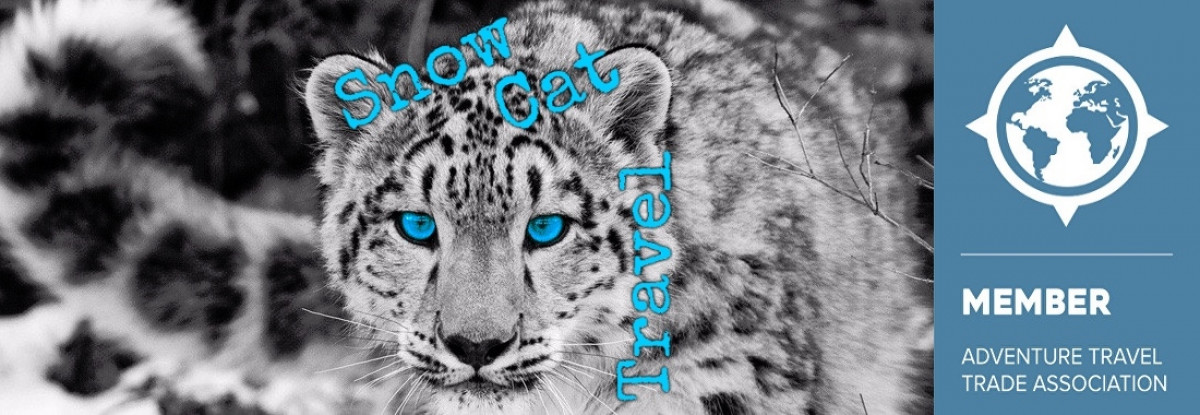Author of Lonely Planet Trekking in Nepal and Rough Guides Nepal Stuart Butler recently travelled to Nepal with Snow Cat Travel.
His mission was to find out more about the mysterious Yarsagumba, half caterpillar, half fungus it's worth more than its weight than gold!
So, Stuart undertook the amazing Manaslu Circuit Trek, which offers a dramatic circular trail with dramatic views in varied landscapes and to get a close-up view of one of the most strange and valuable natural products on earth.
Here's Stuarts article originally published in "The National"
On The Trail of Yarsagumba

Holding it between her thumb and forefinger, Rhita gently rubbed the mud and soil away and slowly, out of the muck, emerged a small object worth more than its weight in gold. Carefully, she handed it to me to look at. For something so valuable, I had to admit that it wasn’t a very pre-possessing sight. It looked like nothing more than a crinkled, sun-dried yellowing plant tuber with a short stick coming out of one end. “In the big cities of China, a kilo of this can sell for US$40,000 or 50,000 [up to Dh183,625]”, she explains. Handing it back to her I looked around me. Groups of people, dwarfed to the size of ants by the grandeur of the surrounding mountains, could be seen moving slowly across the mountain pastures with eyes fixed attentively to the ground searching for more yarsagumba. “We get paid much less than that for gathering it,” she continues, “but over the past 10 years it has still changed lives here”.

Rhita and I were in a mountain meadow above the rough stone-walled village of Samdo, high in the Nepalese Himalayas. Around the village folds and counterfolds of black rock mountains, disappeared into the low pre-monsoon clouds. Somewhere out there, hidden under the veil of cloud, was Mount Manaslu, which at 8,156 metres is the world’s eighth-highest mountain. Ten days earlier, in the village of Soti Khola, I’d laced up my hiking boots, picked up my pack and took my first step along Nepal’s acclaimed Manaslu Circuit trek, which as the name suggests, takes walkers on a wild two-week loop around the mighty mountain.

First opened to foreign trekkers in the early 1990s, the circuit gained a fast reputation as one of the world’s best treks. And in the week-and-a- half between my first footfall and my mountain slope conversation with Rhita, I’d come to understand why. Every day had presented me with ever more inspiring scenery. There were fertile, terraced foothills, shady conifer forests, milk-blue rivers churning with anger through narrow canyons and open plateaux dotted with stone villages and grazing yaks. And as a constant backdrop to it all were the massive snow peaks.
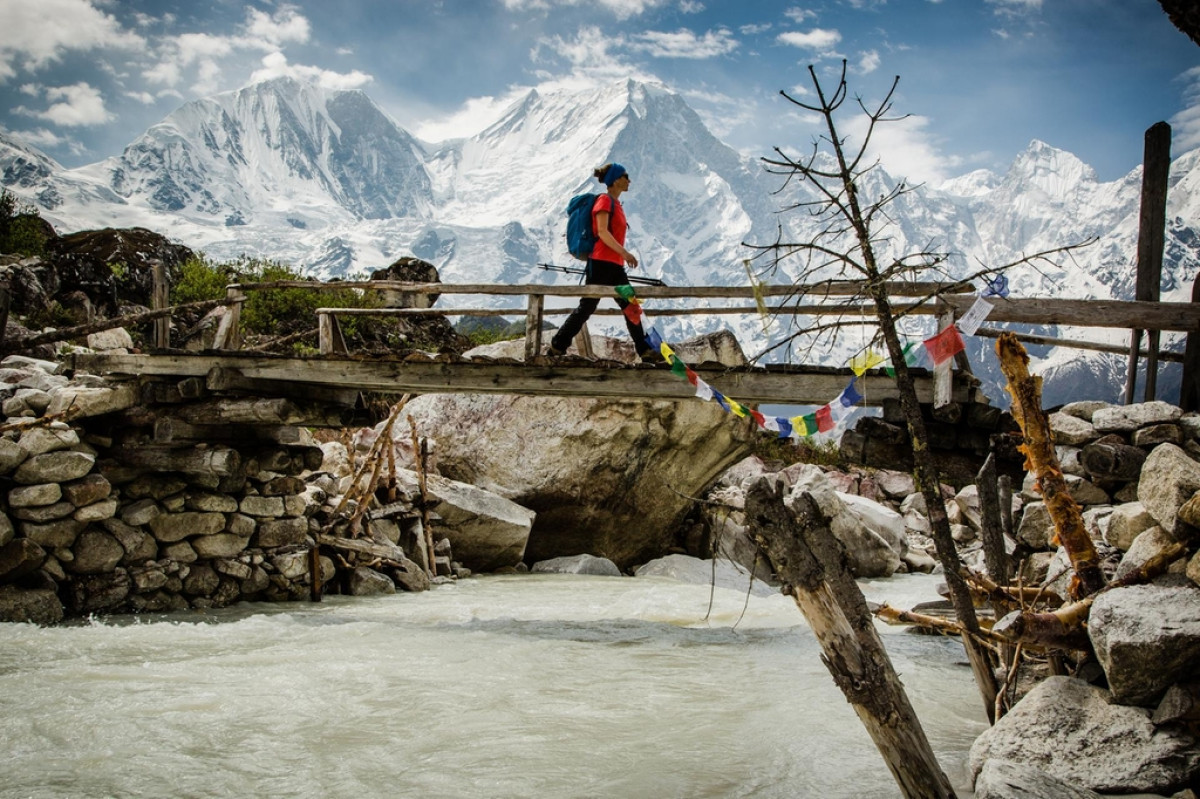
Samdo was the highest, permanently inhabited village on this trek. Beyond it, the trail would carry me breathlessly upward to the Larkya La (5,106m), a rocky, uninhabited, snowbound and bleak pass that would mark the high point of the trek both literally and figuratively. However, that was off into the future and, with the luxury of time to spare, I allowed myself a couple of days in the village, to appreciate my surroundings and acclimatise properly before tackling the peak.
It was on the second day of my stay in the village that I met Rhita. It had been a moody and forbidding day. Dark, heavy clouds skidded low over the passes, menacing rock faces leered over ice flows, and beyond the safety of the village, the only sign of life appeared to be the occasional soaring vulture searching for carrion.

Looking for somewhere to warm myself against the bitter cold, I pushed open the wooden door of the village teahouse and stepped into its warm, smoky interior. As I snuggled up beside the open wood-fired stove at the centre of the room, the tea shop owner, Rhita, unscrewed the cap from a tartan-coloured thermos flask and poured me a glass of salty yak butter tea. Satisfied that I was happy with the hot beverage, she returned to her work of cleaning the fungus she had picked the previous day.
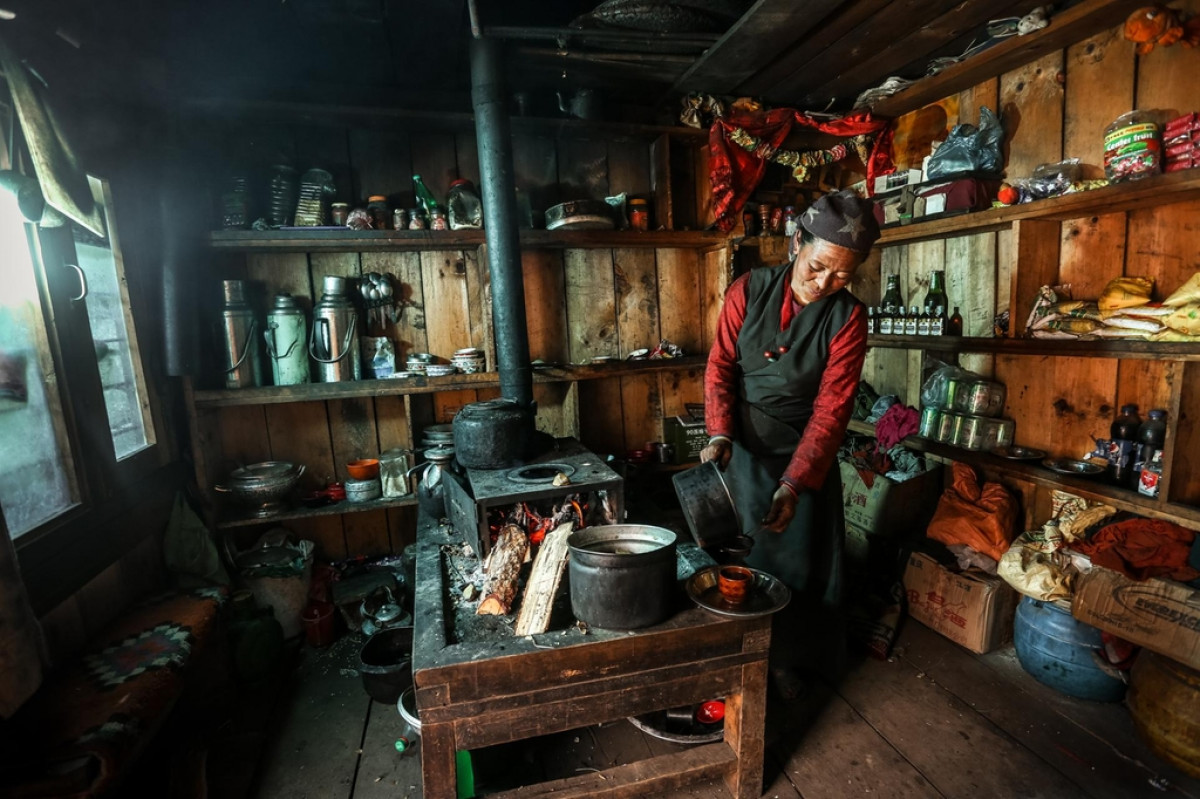
Called yarsagumba in the Tibetan languege, in English meaning “winter worm, summer grass”, is an unlikely combination of caterpillar and fungus. More precisely, it’s the caterpillar of the ghost moth and it gets infected by a fungus that kills the caterpillar and then from the caterpillar’s head, grows a stalk-like object. It occurs only in the highest Himalayan pastures for a few short weeks each year, just before the onset of the monsoon. It might not look like much, but for many Chinese communities across Asia, it has gained a reputation as something of a magical feel-good, cure-all treatment that boosts energy and stamina. Such is the demand for it – and the difficulty of finding it – that gram for gram, yarsagumba is now considered one of the most valuable natural products on Earth.
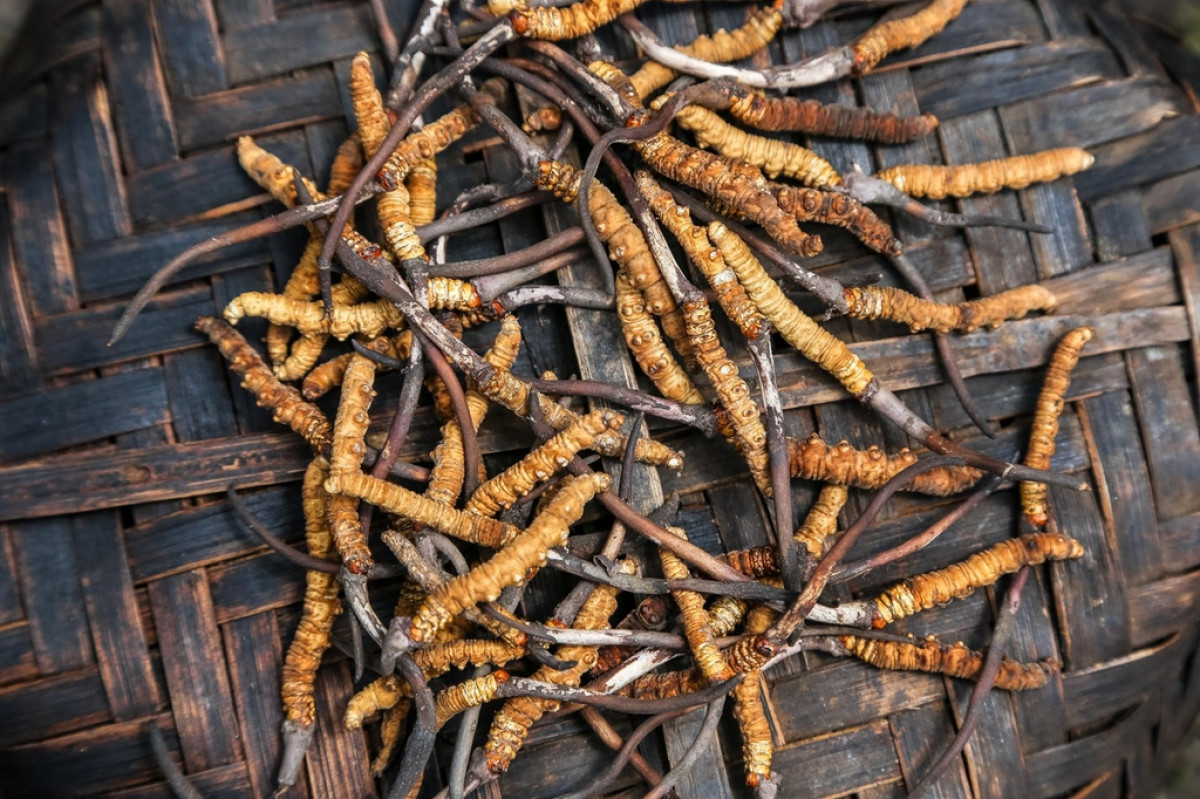
For a while I sat in silence and just watched her at work, but eventually she looked up at me and, as a way of breaking the ice, asked what my favourite part of the trek had been so far. I thought about it for a moment. I could tell her about the time a few days prior when I’d virtually skipped in delight through a flowery Alpine meadow to a remote Buddhist gompa set at the foot of the glaciers that crashed down the north face of Manaslu. But instead, I chose to tell her about the evening I’d climbed to a Buddhist monastery set like a nest above the small village of Lho. I told her how I sat quietly in the courtyard, as evening rays of sun danced orange on the surrounding mountain peaks, and watched entranced as groups of young novice monks, wrapped in maroon robes, engaged in theological Buddhist debate. There was nothing boisterous or argumentative about this debate, though. The whole thing had been co-ordinated like a dance and was interspersed with thunderous hand-claps used to emphasise a point. As the novices had picked over finer theological details, an elderly lady with traditional turquoise jewellery and a face deeply etched with weather lines had circled the monastery again and again, muttering mantras and spinning a battered bronze prayer wheel all the way.
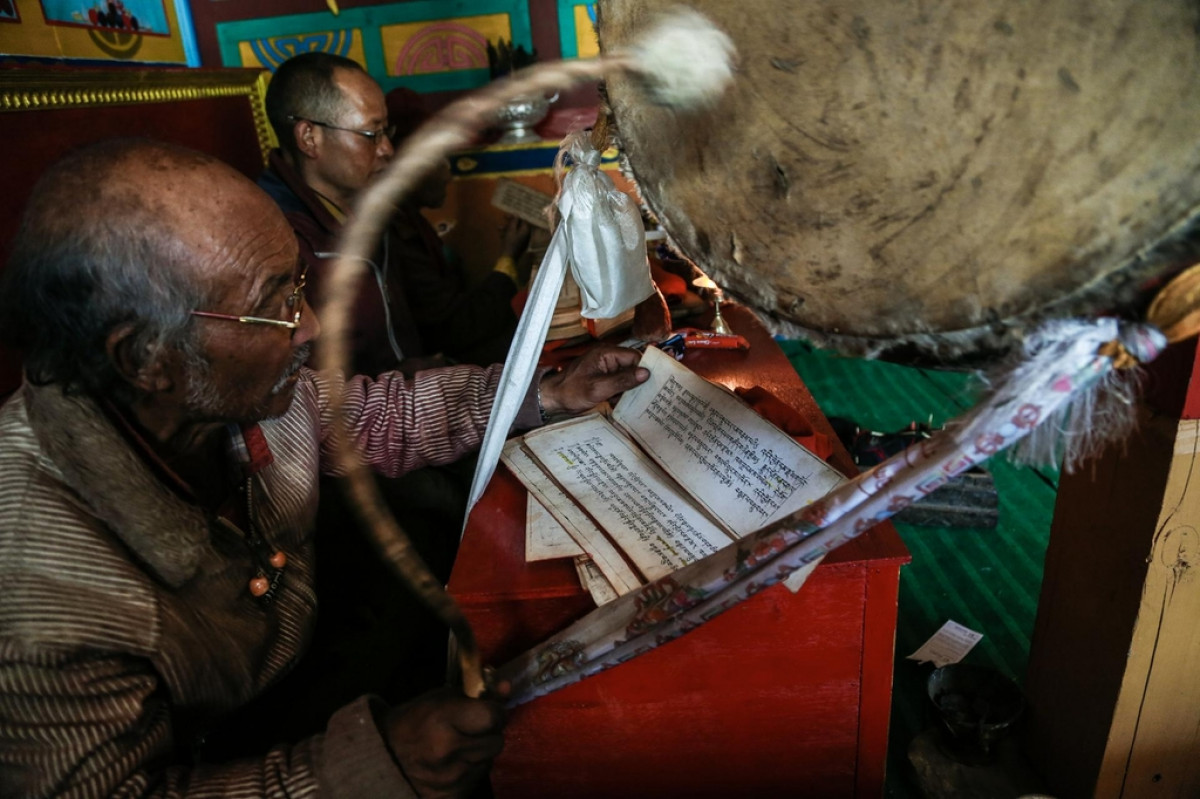
The following morning, we set off early for the high pastures. The yarsagumba-pickers moved with such speed and grace that I couldn’t hope to meet in the oxygen-starved air above 4,000 metres. I spent all of the previous afternoon in Rhita’s tea shop talking to her about life in the Himalayas, trekking and tourism and, of course, the precious fungus. Eventually, she invited me to join her and her friends when they went out to search for more yarsagumba. They took me up a side-valley leading east from Samdo towards the nearby Tibetan border. Groups of marmots chased one and other through the meadows, cold water streams slipped down the mountain slopes, yellow-footed choughs dived and soared in the breeze. It was an idyllic spot, but Rhita and her friends weren’t here for relaxation and picnics, and when we reached the desired area, they locked their eyes to the ground searching for signs of yarsagumba.
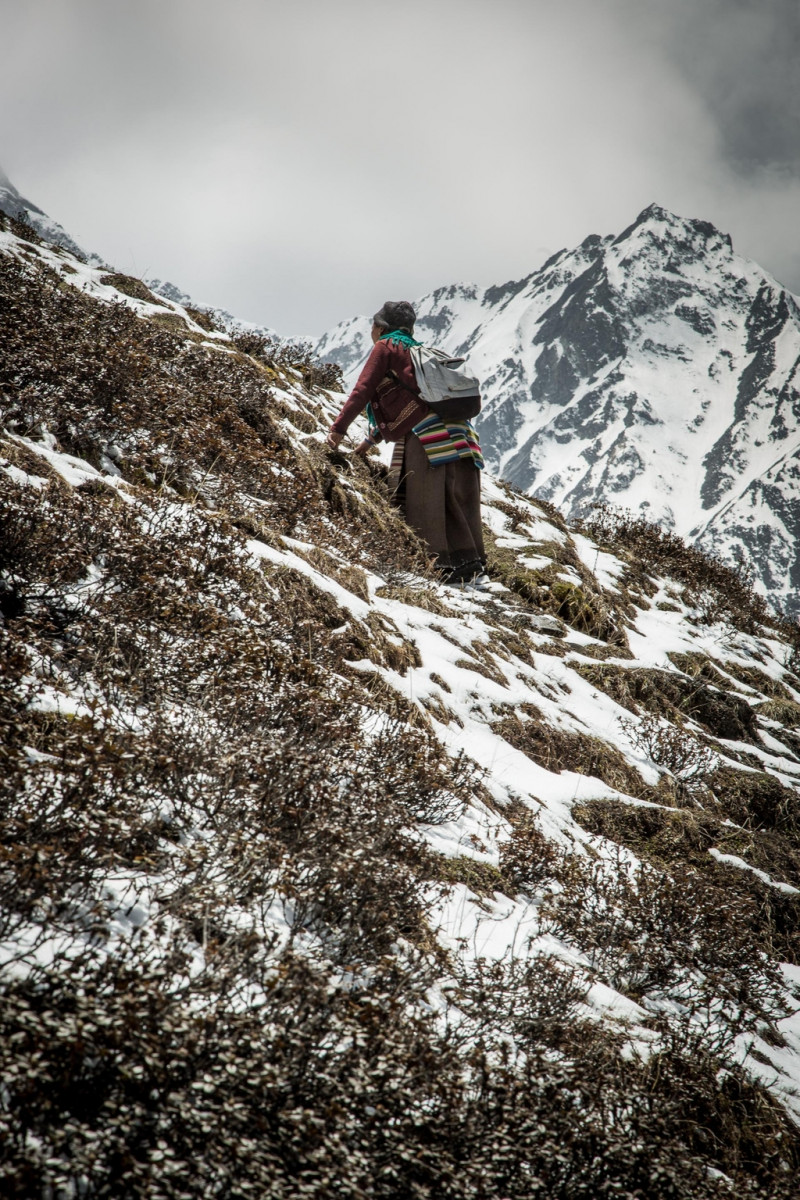
Every now and then there was a shout from someone else in the group as they found a piece, but in general it seemed that pickings were thin on this day. It took Rhita half-an-hour to find her first piece. When she finally spotted the telltale dark stalk sticking a centimetre or so out of the ground, she gave a little whoop of delight and, using a small, curved blade, carefully dug it up. After she’d brushed the mud away, she held it gently in the palm of her hand like it was a thing of wonder. “The money we make from yarsagumba allows us to send our children to good schools in Kathmandu or Pokhara. And we can buy more yaks and mules and better food to eat,” she explains. “For us, this is like gold. It’s Himalayan gold.”
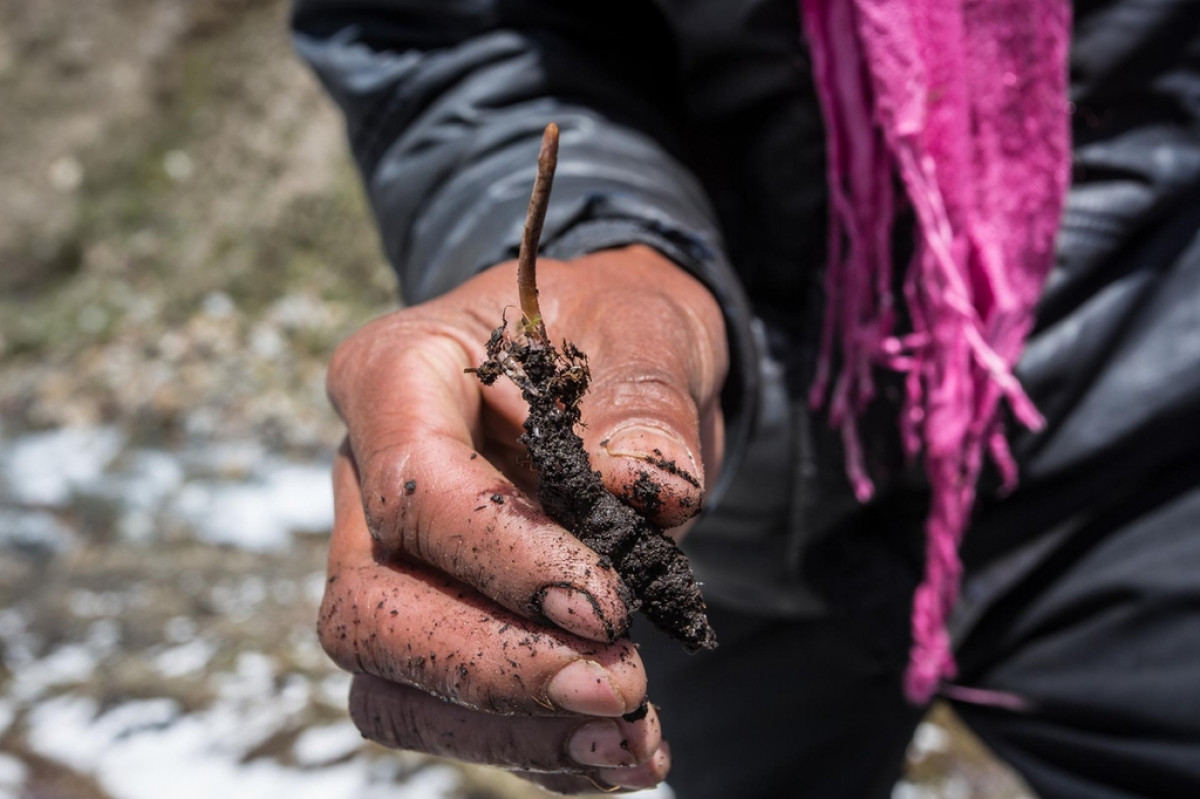
I looked around at this small group of villagers who’d so happily invited me, a stranger, to join them on this search. Beyond them, I could just make out the intimidating looking gap in the mountains that was the Larkya La pass. The next day I would be leaving Samdo and heading up to the pass, and from this distance the fresh coat of snow that lay over it sparkled in the sun like Himalayan gold.
IF YOU GO
The Trip: Restricted area permits $70 per person for the first week then $10 per day for each extra day) are required for trekking in the Manaslu area, as are Manaslu Conservation Area Permits and Annapurna Conservation Area Permits (both around $20 ). A licensed guide obtained through a registered trekking company is compulsory. We recommend the Nepal-UK run Snow Cat Travel.
When To Go: October to May, with October being the best month, though it is also the busiest.
Are you inspired to follow in Stuart's footsteps?
Find out more about the amazing Manaslu Circuit Trek
